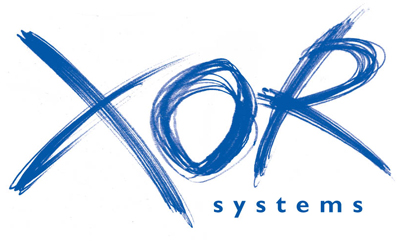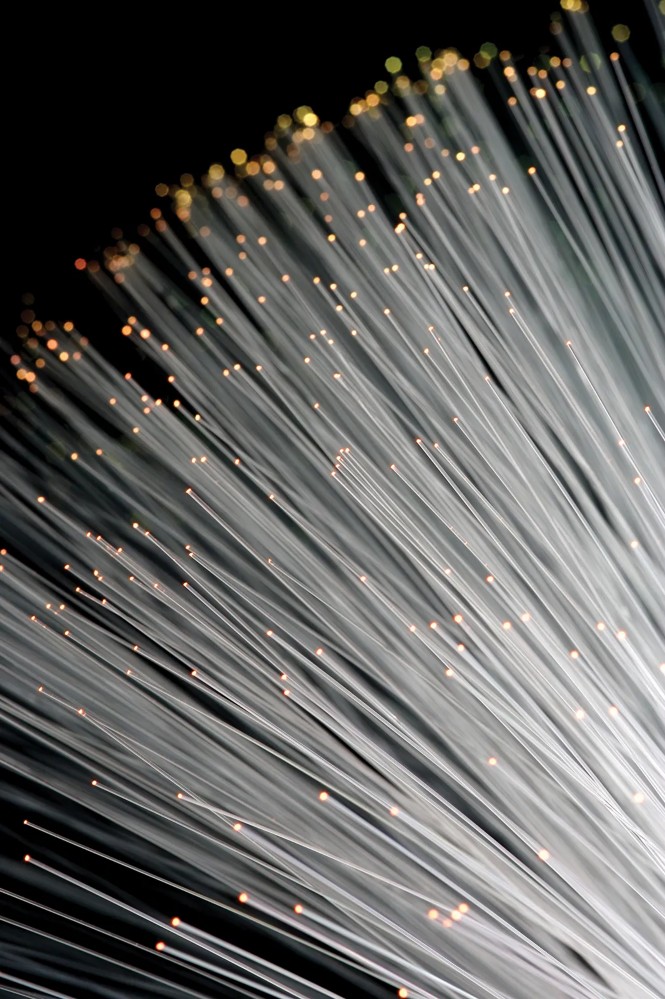Fibre-optic Communication 04-08-2023
Fibre-optic transmission has revolutionised communication across the globe. What is it, how does it work, and why is it used in place of electrical transmission?
Fibre-optic communication is a way of transmitting data through a cable using visible or infrared light. It was first proposed as a method of communication by scientists at Tohoku University in Japan in the 1960s. The process of fibre optic communication involves shinning light down a thin cable made from an electromagnetically-permeable material called optic fibre, which is made from either plastic or glass. The data to be communicated is used to modulate a carrier wave (a high frequency, pure tone sine wave) for more efficient transmission. This carrier wave is then 'decoded' by the receiver, which can then use the the received data freely (this process will be described in more detail in an upcoming article on Fast Fourier Transforms).
So why do we use fibre-optic communication over more conventional radio or copper-wire communication methods? In the case of radio transmission, a lot of the reason comes down to the strange way electromagnetic radiation behaves when passing between mediums of different densities. This is called refraction, and can cause light to bend and behave strangely when travelling long distances. An example of how refraction effects light can be found in the interactive animation below. Within fibre-optic cables, only total internal refraction occurs, as the entire length of the cable is the same medium. Due to this, refraction in fibre-optic cables should only occur at acute angles, marginally increasing transmission time but leaving the signal otherwise unaffected in direction. A reason for using fibre-optics over traditional copper-wire is that it greatly reduces the amount of electromagnetic interference inducing unexpected behaviour on the transmitted signal through current. This greatly improves the quality of the signal, which in turn makes decoding the signal far easier. All of these benefits make fibre-optic communication low-loss, meaning very little of the signal has degraded by the time it is received.
How Refraction Effects Light
Refraction effects light waves by changing the angle at which they travel when travelling between two different mediums. Snell's Law governs what angle the light enters the new medium and what angle it continues at. This is demonstrated in the animation to the right. The angle slider determines what angle the light enters at, and the refractive index slider essentially determines the density of the second medium. Note that in reality the refractive index is determined based on the speed of light in a certain medium divided by the speed of light in a vacuum. This implies that the refractive index of a vacuum is 1. Snell's law is given as: $$\sin(\theta_2) = \frac{n_1 \sin(\theta_1)}{n_2}$$ As previously mentioned, within fibre-optic cables only total internal refraction can occur, which occurs in this demonstration when the incoming light passes 90 degrees.
Angle
refraction index
What are the drawbacks of fibre-optic communication? The biggest drawback is cost. Fibre-optic is not cost effective over short distances, and is only used in situations where there is no safe alternative (such as in high voltage environments or in environments full of dangerous gas). This is why you will often have a fibre-optic cable connecting your modem to your local DNS server, but you connect to your router through WiFi. Another problem with fibre-optics is that they are fixed in place, and will not be appropriate for any device that needs freedom of movement, such as GPS systems.
As more and more devices are connected to the Internet of Things, the need for greater reliability in signal transmission has become paramount. Today, fibre-optics are an important means of communications between towns, cities, and countries, and make up the backbone of British telecommunications. Fibre-optic communication is also extremely important to both the UK and USA financial markets as both parties rely on undersea cables to transmit information about their respective markets quickly and accurately. In long distance weather, sound, and particle analysis fibre-optic communication is used for high speed transmission of data between sensors and data-processing units.

